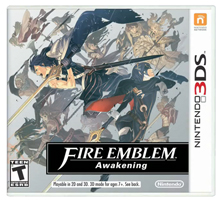
In ages past, the Fell Dragon sought to bring ruin upon the world. Wielding the Falchion sword, gifted to him by the Divine Dragon, man vanquished and sealed away the Fell Dragon. In the present era, the kingdoms of Ylisse and Plegia, who worship the Divine Dragon and Fell Dragon respectively, have a strained relationship, which could shatter at any moment. Fearing his nation’s safety, Chrom, the prince of Ylisse, leads the Shepherds to keep his nation at peace. Soon, Chrom crosses paths with a mysterious stranger—a fated meeting that is only the beginning of a spiral of events that will lead to the Fell Dragon’s awakening.
About the Game
After two remakes in a row, a brand new Fire Emblem makes its appearance on the Nintendo 3DS. Described by its developers to be a “greatest hits” of past Fire Emblem ideas, Awakening borrows many popular gameplay elements from previous titles, such as special Skills, a traversable world map and marriage. Also, despite being a handheld title, the game’s production values are through the roof, with wonderfully crafted 3D graphics and CGI videos, as well as tons of game content, including downloadable content.
In typical Fire Emblem fashion, Awakening starts a new story, this time spanning two continents—Ylisse and Valm. Eagle-eyed fans may notice elements and returning characters from previous titles, such as Marth and Tiki. In fact, Awakening takes place in the same world as Shadow Dragon, Gaiden and Mystery of the Emblem, but thousands of years later. Following the passage of time, much has changed and the connections to previous titles are vague at best, so don’t fret if you haven’t played any of the aforementioned titles!
Customisable Avatar
Returning from Heroes of Light and Shadow, players can create their own character—an Avatar—who serves as one of the game’s main characters alongside Chrom.
![]()
Players can customise their Avatar’s gender, physical appearance and profile. The choices made by the player will be reflected in the Avatar’s 2D portrait, map sprite and 3D battle model. Unlike previously, players can’t choose their Avatar’s class at the very start; Avatars always begin life as a “Tactician”, a class that is capable of using both swords and magic tomes. However, by using a Second Seal item, they are able to switch to nearly any regular class available to their gender.
World Map
The explorable world map from Gaiden and The Sacred Stones returns.

Players can travel to specific locations on the world map, where they can enter story or optional battles or purchase supplies at their leisure. During any time on the map, players can manage their characters, adjusting their inventories and Skills, as well as managing support relationships. From time to time, enemy squads and friendly merchants will pop up on the world map and you may even encounter mysterious guests from other worlds too…
“Dual” System
A new battle mechanic that allows characters to borrow help from a friendly unit.
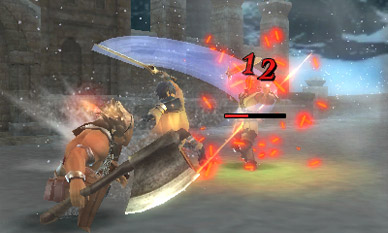
When a character enters battle with a friendly unit next to them, the friendly unit will appear besides them as a “Support unit”. As well as boosting the Lead unit’s combat stats, the Support unit offers a chance of providing offensive and defensive aid—all elements of the Dual system.
After the Lead unit strikes the enemy, a “Dual Strike” may occur, where the Support unit launches a follow-up attack on the unsuspecting enemy. When the Lead unit is attacked by the enemy, a “Dual Guard” may trigger, where the Support unit completely shields them from damage. The stronger the bond between characters, the higher the chance of a Dual Strike or Dual Guard activating.
“Pair Up” System
This new battle mechanics allows two characters to combine together and act as one stronger unit.
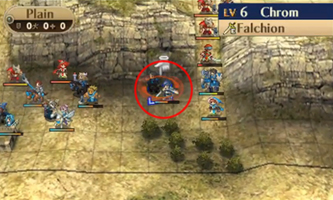
It works in a similar manner to the Rescue feature in previous games; when two characters Pair Up, only one character will face the enemy, with the other remaining in standby. You can Pair Up to swiftly transport low movement units across the map or pull out characters from dangerous situations. Unlike the traditional Rescue command, the Pair Up command is triggered by the character wishing to standby and not the character who will be fighting.
Pair Up has additional benefits, as the Lead unit will gain stat bonuses when paired; the bonus depends on the type of unit they’re paired with (e.g. pairing with a Mage mainly raises Magic) and the support level between the characters. The standby character in the pair will also act as a Support unit, allowing them to dish out Dual Strikes or Dual Guards. Furthermore, the Lead and Support units can switch roles on command.
Bonds & Marriage
The return of the support system from previous games.
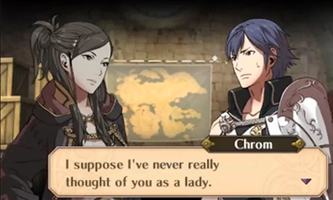
Certain pairs of characters (such as your Avatar and Chrom, shown above) can develop “bonds” by fighting together. Once a bond has reached a suitable strength, a detailed support conversation can be viewed outside of battle, cementing the characters’ bond. The strength of the bond is physically categorised as a support level of C (lowest), B, A or S (highest). The higher the support level, the greater the effectiveness of Dual and Pair Up and the higher the chance of performing a Dual Strike or Dual Guard.
Two characters of different genders have the ability to form the strongest bond possible—marriage—by obtaining an “S” level support. The player’s Avatar has the privilege of being able to marry any playable character, while the rest of the cast get an impressive wide range of choice. The results of marriage involve love confessions (in the case of your Avatar) and children (for any couple). Children characters will join up as the story progresses and they can fight on your team.
Changing Classes
There are two methods of changing a character’s class.
Master Seal
![]()
When a character is Level 10 or over in their non-promoted class, they may use a Master Seal item to promote to one of two promoted classes, like in The Sacred Stones. Cavaliers can promote to the mobile and magic-resistant Paladin or the axe-wielding and sturdy Great Knight, like Frederick. Meanwhile, Clerics, such as Lissa, can promote to the axe-wielding War Cleric or the offensive magic-wielding Sage.
Second Seal
![]()
When a character is Level 10 or over in their non-promoted class (or any Level in a promoted class), they may use a Second Seal to reclass to one of three non-promoted classes, like in Shadow Dragon. If the character is Level 10 or over in their promoted class, in addition to the non-promoted classes, they can also reclass to the matching promoted classes. The classes a character can reclass to are restricted by the character’s personality and upbringing.
The Avatar is a special case: they can also use the Second Seal to reclass to almost any other class, barring special classes like the Taguel.
Either way, after a character has changed classes, their Level will be reset to 1, but they will keep all of their learned Skills. By changing class multiple times, characters can gain higher stats and have more Skills at their disposal.
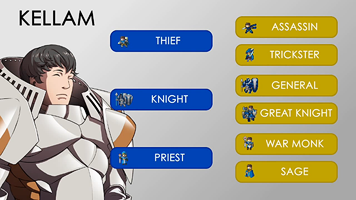
In Kellam’s case, he starts off as a Knight, so he can promote to a General or Great Knight by using a Master Seal, when he’s Level 10 or higher. When he’s a Level 10+ Knight or a Level 1+ General or Great Knight, he can use a Second Seal to reclass to a Thief or a Priest or even a Knight again (and therefore access their corresponding promoted classes by using a Master Seal at the appropriate Level). Finally, when he reaches Level 10 or higher in any promoted class, he can use the Second Seal to reclass to any of the non-promoted or promoted classes available to him.
Special Skills
Last seen in Radiant Dawn, characters can obtain Skills, which provide various benefits in and outside of battle.

Characters may start off with certain Skills from the onset and new Skills can be learned upon levelling up. The Skills that a character can learn depend solely on their class, so characters can learn more Skills by levelling up in different classes, eg. through multiple uses of Master Seals and Second Seals. As the above image illustrates, each character can hold a maximum of 5 active Skills at once and players can freely change a character’s active (left) and inactive Skills (right) when outside of battle.
Modes for Everyone
Just like in Heroes of Light and Shadow, players can choose to begin the game in Classic or Casual mode. In Classic, characters who are defeated in battle are lost forever, just like the other games in the series. However in Casual, fallen characters will return in the next map and, in addition, players can save their progress at any time during battles. Three difficulty settings can be chosen at the beginning: Normal, for new players or fans out of the loop, Hard for experienced players and Lunatic for true masters of strategy. For real loonies, there might even be a difficulty above Lunatic…
Barracks
Essentially the “How’s Everyone” feature from Heroes of Light and Shadow.
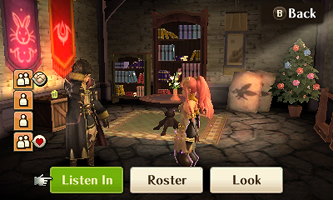
The “Barracks” feature lets players visit their characters outside of the battlefield, to see how they’re faring; the rewards for doing so include experience points, items (such as Eliwood’s Blade) and improved relationships.
Communications
Awakening supports all of the 3DS’s communication features.
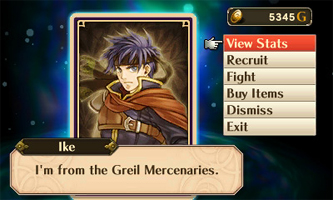
In the “Double Duel” mode, two Awakening players can team up via Local Play to fight 2 on 1 battles against the computer. Passing other players via StreetPass makes other players’ teams show up on your world map: you can recruit other players’ Avatars and battle their teams in your own time. Additional content will be distributed for free via SpotPass, such as characters from previous Fire Emblem titles and new sidequest chapters. Finally, when connected via the internet, players can access the paid downloadable content, which includes new maps and missions, featuring characters from previous games.